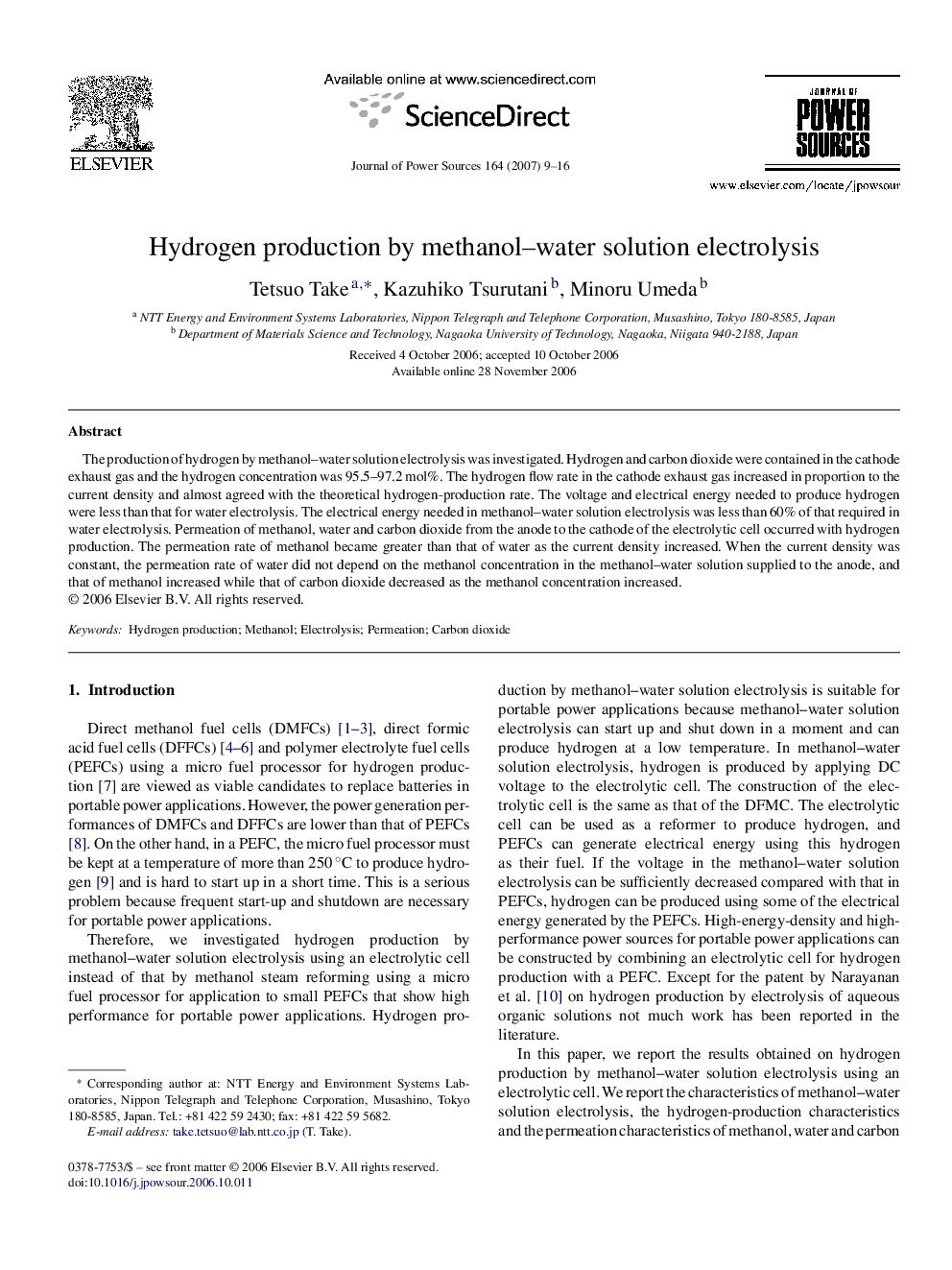| Article ID | Journal | Published Year | Pages | File Type |
|---|---|---|---|---|
| 1291686 | Journal of Power Sources | 2007 | 8 Pages |
The production of hydrogen by methanol–water solution electrolysis was investigated. Hydrogen and carbon dioxide were contained in the cathode exhaust gas and the hydrogen concentration was 95.5–97.2 mol%. The hydrogen flow rate in the cathode exhaust gas increased in proportion to the current density and almost agreed with the theoretical hydrogen-production rate. The voltage and electrical energy needed to produce hydrogen were less than that for water electrolysis. The electrical energy needed in methanol–water solution electrolysis was less than 60% of that required in water electrolysis. Permeation of methanol, water and carbon dioxide from the anode to the cathode of the electrolytic cell occurred with hydrogen production. The permeation rate of methanol became greater than that of water as the current density increased. When the current density was constant, the permeation rate of water did not depend on the methanol concentration in the methanol–water solution supplied to the anode, and that of methanol increased while that of carbon dioxide decreased as the methanol concentration increased.
